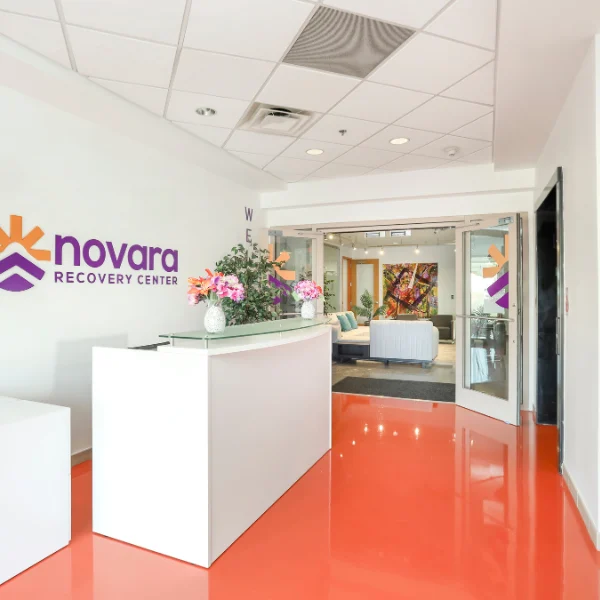Stimulant addiction is a growing public health issue. We need to be more aware of its signs, causes, and ways to treat it effectively.
Stimulant addiction affects millions of people, but it’s a complex subject to talk about. It’s a serious problem that is getting worse.
In the United States, the use of stimulants is increasing. In 2022, more than 10.2 million people aged 12 and older misused stimulants like cocaine, meth, or other prescription drugs for ADHD. This is a significant increase from 9.4 million the year before.
It isn’t just about numbers; it’s about people’s lives. This increased trend correlates with an increase in fentanyl-related fatalities, especially when people mix these substances. In 2010, less than 1% of overdose deaths involved stimulants. By 2021, that number had jumped to 32%.
If you’re using drugs, you probably aren’t just using one kind. Combining different drugs or polysubstance use is very common.
Sometimes, people purposely mix alcohol, opioids, and stimulants, either at the same time or at various times. Other times, it happens by accident. Mixing these drugs can be very dangerous—you’re more likely to overdose.
Stimulant addiction occurs when your body becomes dependent on substances like cocaine, methamphetamine, or even prescription ADHD medications. However, it’s not just a physical issue; your mind also becomes deeply involved. This type of addiction can trap you in a brutal cycle that’s hard to break.
It often begins when you start using stimulants to cope with challenging situations or to manage a hectic lifestyle. Initially, it might seem beneficial—you feel more energetic, focused, and happier. As you keep using, your body and mind start to crave the high more. Your tolerance grows, so you need more of the substance to feel the same effects.
Quitting can be tricky, especially when those withdrawal symptoms hit hard. It might seem like you’re stuck in a never-ending cycle.
The Role of Dopamine in Addiction
Here’s how stimulant addiction begins in your brain. Remember, whether a doctor prescribes the stimulant or you get it illegally, both can have similar effects. They both raise dopamine levels.
This chemical helps you feel good. It affects parts of your brain that make you feel happy and rewarded. It also impacts areas that control movement, focus, and motivation. When dopamine levels increase, you might feel thrilled, have more energy, and feel generally good.
For legal stimulants, doctors carefully watch the amount given to make sure it helps in the right way. If you take the medicine as the doctor says, it can be both helpful and safe.
But here’s the issue: when someone starts using stimulants in the wrong way, the substance makes the brain adapt. Over time, you need more and more of it to feel the same effects. And that’s when addiction can start.


There are all sorts of stimulants out there, and some of them are legal. Some medications come from doctors. However, some are sold illegally on the streets.
Prescription stimulants include amphetamines and methylphenidates. Amphetamines are in medications like Dexedrine, Adderall, Biphetamine, and Vyvanse. Methylphenidates include Ritalin, Concerta, and Methylin.
Still, using illicit stimulants can be riskier. You might have heard of cocaine, along with its more potent form called “crack” cocaine, as well as methamphetamines and MDMA. Also, even though caffeine and nicotine might not look harmful right away, they’re both stimulants, too.
Amphetamines are a type of stimulant, and you might have heard of some, like Adderall and Ritalin. Doctors prescribe these to treat ADHD, helping people concentrate and have more energy. But when people use them without a doctor’s guidance, problems can happen.
Some people misuse these drugs to stay awake. They use them as “study drugs” to prepare for tests. Others try to improve their performance in different areas.
Study drugs are prescription stimulants, like amphetamines. People sometimes use them without a prescription. They may also use them in the wrong way.
These drugs can help boost energy, stamina, or focus. This is especially true when studying for school tests. Research shows that using study drugs like Ritalin or Adderall without a prescription does not improve grades.
You can administer these substances through various methods, including nasal inhalation, smoking, injection, and, in some cases, rectal insertion. The initial high feels good, but the crash afterward can make you feel exhausted, anxious, and, eventually, addicted.
In 2023, about 5 million Americans aged 12 and older said they used cocaine in the past year. Cocaine is a well-known stimulant, and it’s illegal in many places for good reasons. It affects you quickly and strongly, which is why it’s so addictive.
No matter how you use it—snorting, smoking, or injecting—cocaine can raise your heart rate and blood pressure. This puts a lot of stress on your body. The effects of stimulants like cocaine don’t last long, and soon, you want that feeling again. This can quickly become a dangerous habit.
Cocaine-related overdose deaths in the U.S. fell from 2006 to 2010. However, the situation has worsened since then.
In 2019, non-Hispanic Black people had the highest overdose death rate involving cocaine. Between 2021 and 2022, cocaine-related overdose deaths shot up by nearly 13%. In fact, about 28,000 Americans lost their lives to a cocaine overdose in 2022 alone.
Methamphetamine, commonly known as meth, is one of the most commonly abused stimulants. About 10 million people in the U.S. who are 12 and older have used methamphetamines at least once. Among these, 338,000 are teenagers aged 12 to 17, and 1.5 million are adults aged 18 to 25. This shows that methamphetamine use is quite common among teens and young adults, too.
Methamphetamine is behind most of the deaths tied to psychostimulants. In 2022 alone, these substances caused around 34,000 overdose deaths. That’s nearly a 5% jump from the previous year.
While it might give you a quick boost, the effects are very harmful. Users often suffer from intense physical and mental issues, such as anxiety, paranoia, and seeing things that aren’t there.
The damage to your body can be serious. It can lead to problems like severe tooth decay, often called “meth mouth,” and major weight loss. Illegal labs usually make it, which makes it very addictive.
Caffeine is one of the most widely used stimulants globally, and you might not even know it! You can find it in coffee, energy drinks, and sodas. Many believe it’s a safe way to stay awake or get a quick energy boost.
For most people, having a little caffeine occasionally is OK. However, things can become complicated if you start depending on it too much. You might develop a tolerance, meaning you need more to feel the same effects, and then you could experience withdrawal symptoms if you stop.
It can also cause trouble sleeping, worry, or stomach problems. In severe cases, it could even lead to addiction. It’s very important to use caffeine in a balanced way—to help you stay awake without relying on it too much.
If you want to spot signs of a stimulant use disorder in someone you value, you can find them. You just need to know what to look for. But it can be complicated, especially if someone tries to hide it. Still, there are some common signs and symptoms that can help you catch the problem early, such as:
If you or someone you know needs to use more of a substance to get the same effect, it’s a clear sign that tolerance is building up. This is often the first step toward addiction. Over time, your body adapts to the substance, and the usual amount no longer works as well. As a result, people might start using more, which increases the risk of overdosing.
The FDA has issued a serious warning about medications like Adderall that stimulate the brain and body. People refer to this alert as a “black box,” meaning it is serious and needs careful attention. This warning tells users that these substances have a high risk of abuse and addiction. It also highlights the risk of serious, possibly deadly, complications.
No matter what stimulant you use, they all work similarly—they give your brain extra dopamine. When you use them often, your brain adapts to it. Your body adapts to high dopamine levels and eventually stops producing it to maintain balance.
When you stop using a stimulant, your brain gets confused, and that’s when you feel the crash. Your dopamine levels don’t get the boost they need, which can cause some uncomfortable withdrawal symptoms.
Quitting stimulants can be hard. So, you might experience things like:
You might notice that the symptoms you go through when withdrawing from stimulants can differ from one person to another. It comes down to what kind of stimulant you’ve been using, how much, and how often, along with your overall health.
For some people, withdrawal symptoms can be mild. For others, they can become much more intense. In some cases, these symptoms can even pose serious risks.
One of the significant risks when going through withdrawal is the deep depression that can hit hard. That’s when things can start to get a little tricky. There are times when you might feel really down or even think about hurting yourself or ending your life.
It is vital to have a doctor or therapist present with you at this moment. They will put a lot of effort into guaranteeing your safety during the trip. Make sure that putting your mental and physical health first is your primary focus.
When addiction takes over, people often lose sight of their responsibilities. This can happen in their personal lives or at work. If you notice that you or someone close to you starts to avoid work, ignore important tasks, or withdraw from social events, there may be a stimulant misuse issue.
When addiction takes over, it overshadows everything in your life. Your job, relationships, and daily tasks take a backseat. When priorities change, drug-seeking or drug use can become the main focus. This makes it hard to concentrate on anything else.
Some experts say that if you see changes in how someone acts or feels, you should take note. This could be a sign of addiction. So, these changes can be:
We also have other signs that might suggest someone is using stimulants. If you notice someone becoming distant, losing interest in things they once enjoyed, or pulling away from friends, that might be a sign. Financial issues, sleeping too much, confusion, extreme excitement, impulsive actions, secretive behavior, and poor hygiene can be warning signs.
When people begin to use drugs carelessly, it usually leads to some pretty risky behavior. This could mean actions like having unprotected sex, sharing needles, or driving while drunk.
It also includes risky activities like swimming or fighting when you’re high. They could also combine drugs with alcohol or have a weapon on them. This sets up a risky pattern that gets more dangerous as time passes.
Our caring professionals are standing by around the clock, ready to address all your questions.
Stimulant addiction rarely stems from just one factor; it results from a complex mix of influences. Stress, mental health struggles, and life challenges all play a role in shaping behaviors and increasing the risk of addiction. To help someone break this cycle, it’s important to see the whole picture. We should consider all the factors that affect their situation not just focus on one thing.
Research suggests that genetic factors may impact an individual’s susceptibility to addiction. If your family has a history of substance abuse, you may be at a higher risk for addiction. This is crucial, especially if your parents or siblings have had their own battles with substance use.
Some genes can make the brain more sensitive to addictive substances, like stimulants. This increases the risk of misuse.
Growing up in places where drug use is common can lead people to use stimulants. High stress or trauma can also increase this risk. Things like peer pressure, not having support, and harsh life situations can contribute to stimulant abuse.
If you’re struggling with an addiction to stimulants, there are likely other challenges you’re facing as well. Many people who experience this also face illnesses like anxiety, depression, or attention deficit hyperactivity disorder (ADHD). At first, stimulants might seem like a quick fix, like they help you focus or feel better.
But here’s the thing: they tend to worsen over time. The highs are short-lived, and the crash can leave you feeling even more lost. If you want to get better in the long run, it’s crucial to face both the addiction and the mental health issues tied to it. It’s not easy, but it’s the only way to break the cycle and heal properly.

We know that cost is a major factor for most people when seeking treatment for drug & alcohol abuse in Virginia. Novara Recovery Center works with most major insurance plans to help cover up to 100% of the costs associated with treatment at our program. To find out your personal options for treatment, get a free verification of insurance benefits right now by clicking the button below.









The first step is recognizing the problem and asking for help. But that’s just the beginning! Getting better often means using a mix of behavioral therapies, particular medications, and support from loved ones.
Everyone has different problems and difficult situations in life, whether from past experiences or current issues. Sometimes, people use things like drugs to deal with these problems. But using drugs doesn’t solve the problem; it usually makes things worse.
If you don’t deal with stress and past problems, they can lead to using more drugs. To get better, it’s essential to talk to experts who can help you understand why you use drugs. Once you know what’s causing it, you can start finding better ways to handle your feelings and deal with life’s challenges without using drugs.
There are addiction experts, counselors, and doctors who can provide the support and advice you need. They can assess how severe your addiction is and recommend the best treatment options for you.
Getting through addiction usually means changing your mindset, and that’s precisely where behavioral therapies can be beneficial. When you seek help from a doctor or an addiction expert, they may suggest behavioral therapy to help you recover in the long term.
There are various types of treatment, but cognitive-behavioral therapy (CBT) is highly effective for treating stimulant addiction. Therapy can help you understand why you use substances. It can also help you change negative thoughts that hurt you.
Therapy helps you find better ways to deal with challenges and emotions. It gives you the tools for lasting recovery and a stronger, more resilient future.
If you want to stop or cut back on stimulants, it’s smart to get help from healthcare professionals. They can ensure you do it safely. They’ll help you navigate the process, making it much more manageable. Having their support really boosts your chances of success.
Depending on the medication, your doctor might suggest stopping all at once or gradually cutting back. Usually, reducing the amount gradually is easier on your body and causes less severe withdrawal symptoms. Doctors sometimes use medications like clonidine during this gradual reduction to help your body adjust more comfortably.
During detox, doctors may give you medicine to ease specific withdrawal symptoms. If you’re feeling sad or anxious, they might recommend antidepressants. If you’re having trouble sleeping, Trazodone could be a helpful choice. They’ll make a personalized plan for you, considering your symptoms, health history, and what you need.
You have options for medical detox. Inpatient rehab means you stay at the facility for the whole treatment.
You will receive care all day and night. Outpatient rehab lets you go home at night. You can still attend therapy during the day, which is very convenient.
Outpatient programs make sure your treatment fits your schedule. This way, you can focus on your recovery and manage other parts of your life.
Support groups, such as Narcotics Anonymous (NA) or SMART Recovery, can make a difference in your recovery journey. Being with people who truly understand what you are going through creates a special connection. This sense of understanding can be hard to find elsewhere.
These groups provide a welcoming space where you can express yourself, share your thoughts, and listen to the experiences of others. It’s about connecting and discovering that strength, helping each other find the encouragement to keep pushing ahead.
Prevention is essential—stopping something before it begins is always better. The good news is you can take steps to avoid getting caught in the problem of stimulant abuse. One of the most important things is to learn more about it and teach others.
This is especially important if you’re a parent, teacher, or someone who influences others. The more you know, the better you can see the signs. You can have tough talks and help make a safe space. In this space, everyone understands the risks and knows where to find help.
Possessing knowledge is equivalent to possessing power; it’s as simple as that. The more you comprehend stimulants and their potential for misuse, the more prepared you’ll be to make wise choices for yourself.
Collecting data not only helps you but also enables you to spread the right information to others. By sharing your knowledge, you can help people avoid addiction dangers before they reach a point of no return. The more knowledge you have, the more your strength will grow.
Peer pressure can have a substantial impact, particularly on teenagers and young adults. If you find yourself in a place where people are abusing stimulants, it’s important to stay strong. Don’t give in to the temptation to join them. Hang out with people who lift you and inspire you to make good choices for your health.
Life can get pretty overwhelming, and it’s expected to reach for stimulants to help deal with it. Finding healthy ways to handle stress can help.
You can try hitting the gym, meditating, or writing down your thoughts. These activities can reduce the urge to use stimulants. Building emotional resilience matters for our long-term well-being.
If you’re facing mental health problems or dealing with past events, it’s very important to ask for help. Talking to a therapist or counselor can help you deal with deep-rooted issues. This support may lower the chances of using stimulants to cope.
Stimulant addiction can seem very hard to deal with, but getting better is possible if you have the right help. Whether it’s for you or someone you love, the first step to overcoming addiction is finding the courage to ask for assistance.
At Novara Recovery Center, we provide caring support and expert help. Our goal is to help you take charge of your life and build a healthier future.
To find an addiction treatment program near you, call (703) 705-7870. You can also email us at info@novararecovery.com. Visit us at 2815 Old Lee Highway, Floor 2 Fairfax, VA 22031.
Written By:

Mental Health Writer
Geoffrey Andaria is a seasoned writer and editor specializing in mental health content. With a B.A. in English and Journalism, he possesses a solid foundation in crafting freelance articles and conducting research. Geoffrey has also completed courses in social work. He dedicates himself to providing valuable and informative content for individuals impacted by mental health challenges and addiction.
Medically Reviewed By:

Expert Contributor
Dr. Williams is currently a board member for two non-profit service organizations. He holds a Master’s degree in Human Services from Lincoln University, located in Philadelphia, Pennsylvania.
He possesses a Ph.D. in Clinical Psychology from Union Institute and University, located in Cincinnati, Ohio. He holds a license to offer addiction counseling in both New Jersey and Connecticut. Additionally, he has submitted an application to become a licensed psychologist in New Jersey.






2815 Old Lee Hwy Floor 2, Fairfax, VA 22031